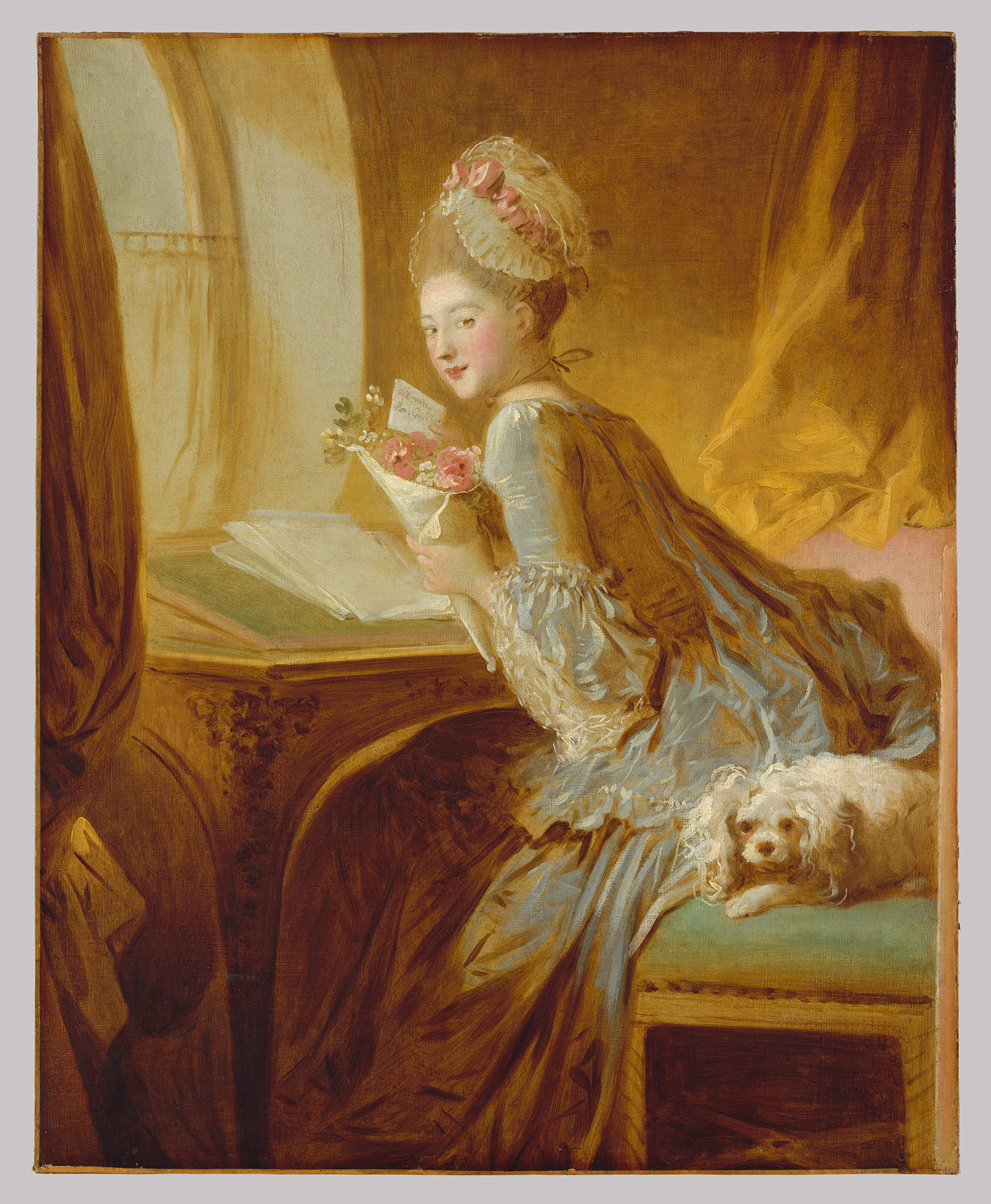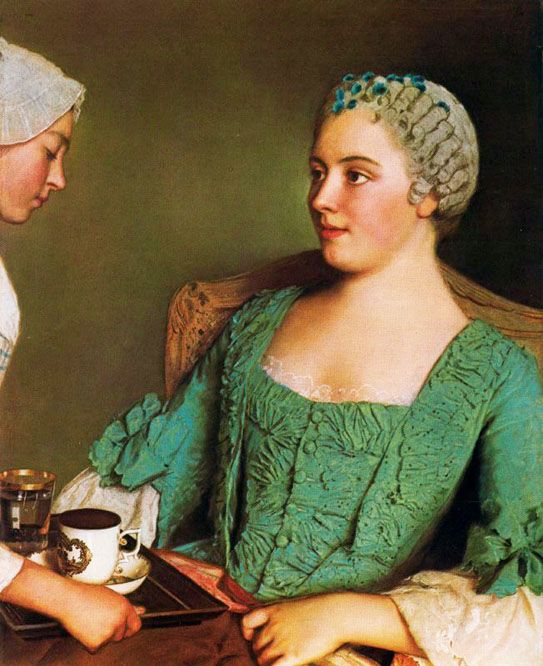Ta da te da te Dum!
(larger fanfare than usual)

 Not only are the pet
and caraco complete (old news) but I have now made the
skirt and a neckerchief to complete the costume. There is no point in
making stays – the only way to reduce or alter Gwen's waist is with
wood working tools, no point in shoes, etc – there are no legs or
feet, and a cap or bonnet looks incomplete without a head to go
underneath it.
Not only are the pet
and caraco complete (old news) but I have now made the
skirt and a neckerchief to complete the costume. There is no point in
making stays – the only way to reduce or alter Gwen's waist is with
wood working tools, no point in shoes, etc – there are no legs or
feet, and a cap or bonnet looks incomplete without a head to go
underneath it.
 |
| front showing the inside of the open pet |
 The skirt is simple,
blocks of fabric pleated at the waist, raised slightly in front to
compensate for the bum rolls. The hem is taped rather than folded, extra work but a smart, clean finish. The construction is straightforward –
the knife pleats face to the back leaving a small flat section at
centre front. A length of tape runs along the waist edge, neatening
and holding the pleat edges as well as extending to become ties to
fasten the skirt. The knife
pleats sit really well, opening over the roll and folding shut when
not needed.
The skirt is simple,
blocks of fabric pleated at the waist, raised slightly in front to
compensate for the bum rolls. The hem is taped rather than folded, extra work but a smart, clean finish. The construction is straightforward –
the knife pleats face to the back leaving a small flat section at
centre front. A length of tape runs along the waist edge, neatening
and holding the pleat edges as well as extending to become ties to
fasten the skirt. The knife
pleats sit really well, opening over the roll and folding shut when
not needed.  This extra layer does not
benefit the mission in search of Gwen's corset waist, but with the
pet's skirts flaring outward over the hips it is contriving to give an illusion
of narrowness ( you have to get the angle just right and squinting
might help).
This extra layer does not
benefit the mission in search of Gwen's corset waist, but with the
pet's skirts flaring outward over the hips it is contriving to give an illusion
of narrowness ( you have to get the angle just right and squinting
might help).
 The neckerchief is
again very basic. Janet Arnold shows a triangle, Nancy Bradbury, a
square to be folded. For this one I used a triangle of muslin –
need practice with the flimsy fabrics, though now I never wish to see
it again! To finish the edge I turned a hem and then caught across
it in the first row of a crocheted edging to keep it secure. The
originals seem to have been made in a wide range of sizes, fabric and
colours – coarse and dark for workers, finer and more ornate for
the ladies, so it seemed quite safe to improvise a little. Having the
longest side of the triangle on the cross grain of the fabric did
make life a little exciting – the muslin is quite loosely woven so
pulled and rolled out of shape. The crochet edging seems to have
stabilised this and inspite of the excessive moaning was not difficult nor take
long. It is a single crochet into the scarf, chain 4, and repeat
every half centimetre. Row 2 is merely single into the chain loop of
the row below, chain 5,and repeat. I did try all sorts of designs of
various complexity but this gave a neat edge with minimum fuss.
The neckerchief is
again very basic. Janet Arnold shows a triangle, Nancy Bradbury, a
square to be folded. For this one I used a triangle of muslin –
need practice with the flimsy fabrics, though now I never wish to see
it again! To finish the edge I turned a hem and then caught across
it in the first row of a crocheted edging to keep it secure. The
originals seem to have been made in a wide range of sizes, fabric and
colours – coarse and dark for workers, finer and more ornate for
the ladies, so it seemed quite safe to improvise a little. Having the
longest side of the triangle on the cross grain of the fabric did
make life a little exciting – the muslin is quite loosely woven so
pulled and rolled out of shape. The crochet edging seems to have
stabilised this and inspite of the excessive moaning was not difficult nor take
long. It is a single crochet into the scarf, chain 4, and repeat
every half centimetre. Row 2 is merely single into the chain loop of
the row below, chain 5,and repeat. I did try all sorts of designs of
various complexity but this gave a neat edge with minimum fuss.
Overall - an enjoyable foray into the 18th Century, frustrating, time consuming, deeply annoying. But enjoyable. There are many errors still to address but I would look forward to tackling them rather than sob into my soup and consider emigration. A full sack back gown perhaps? It will join the growing list Of Things I want To Make... Seeing the ensemble together is strangely satisfying - something to be learnt there I think - but next task...... is already underway.
It is experimental, uses builders' grade and a hair drier - at the same time.
Should have it done for next week's post, if I manage to recapture the scissors by then.
























 Paul
Paul


















